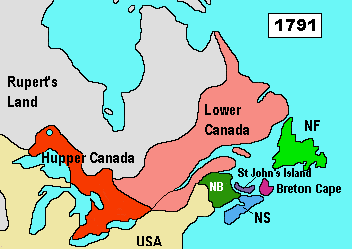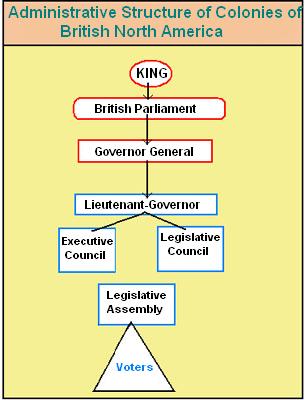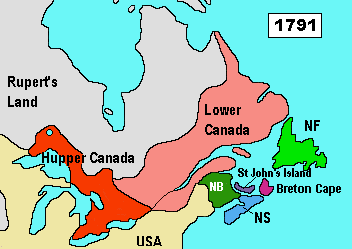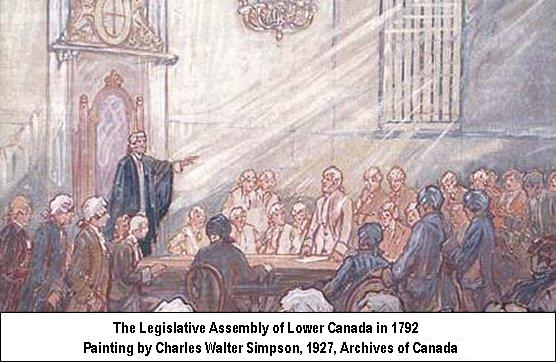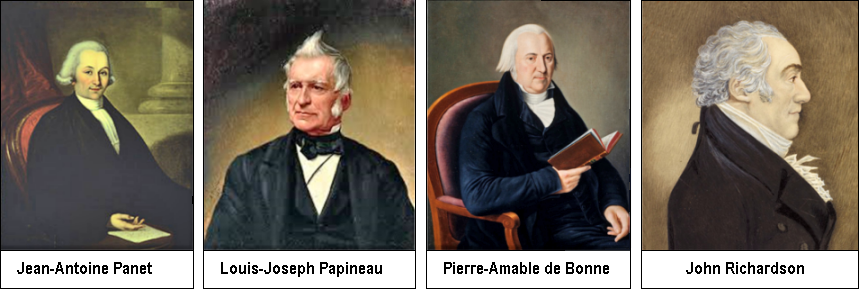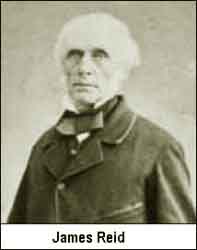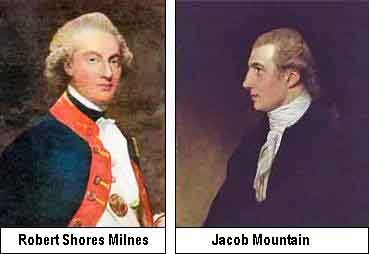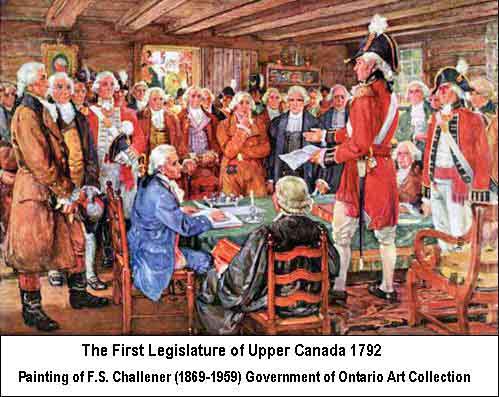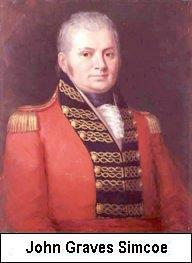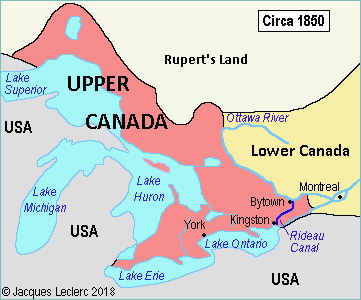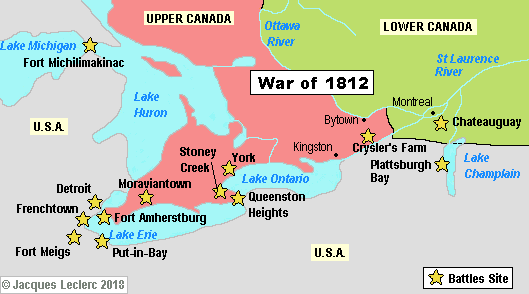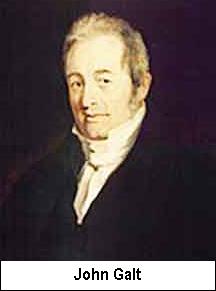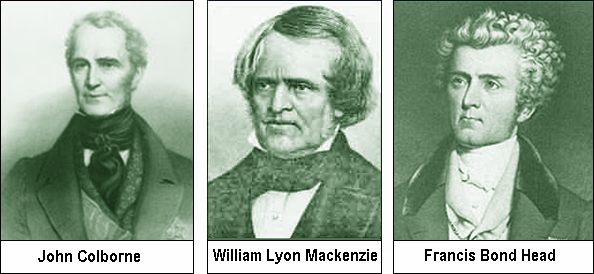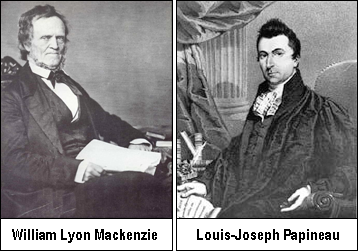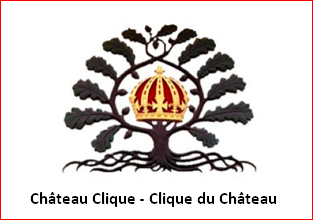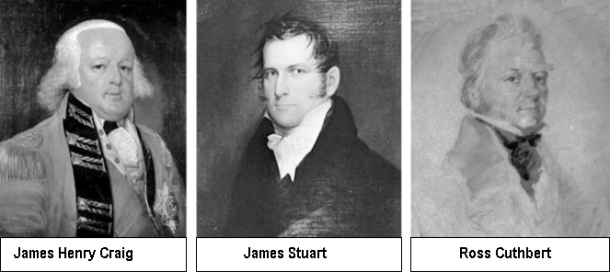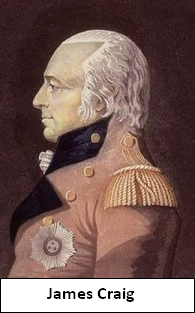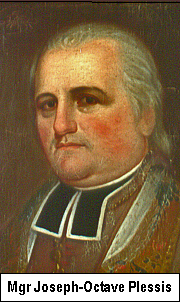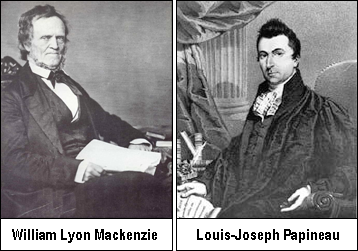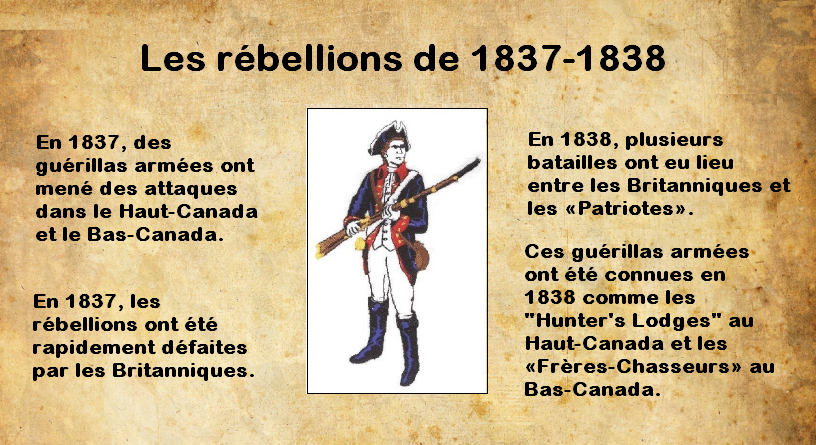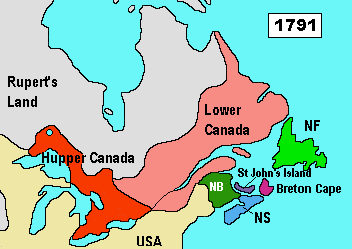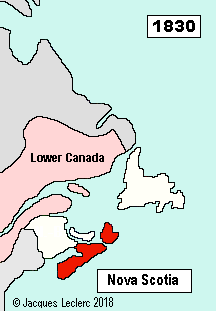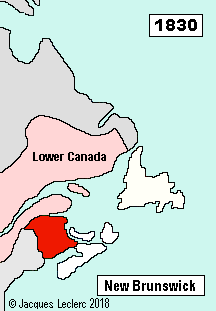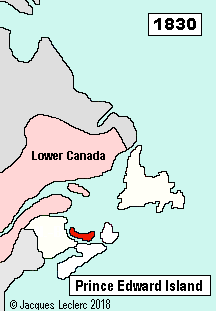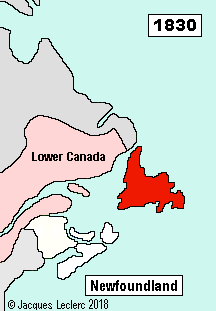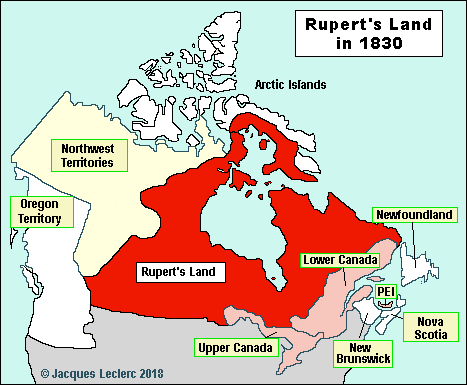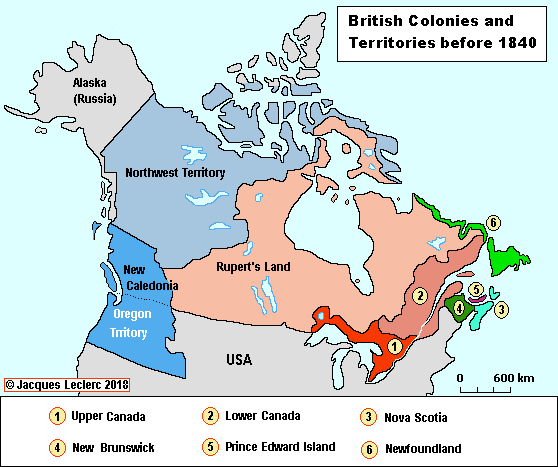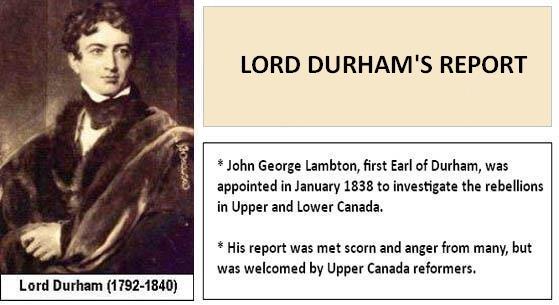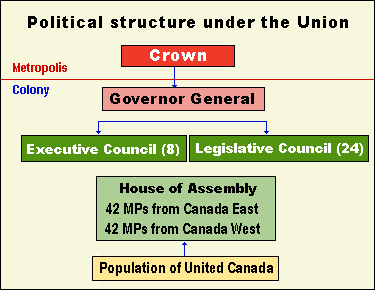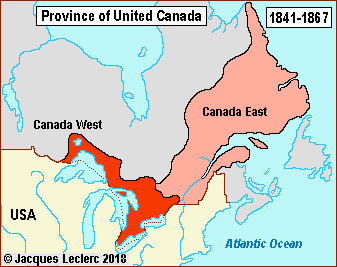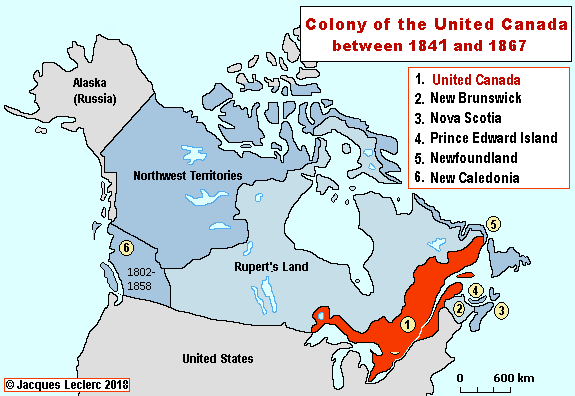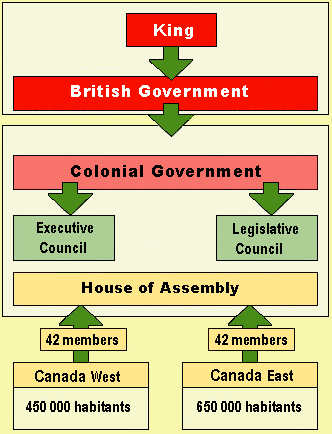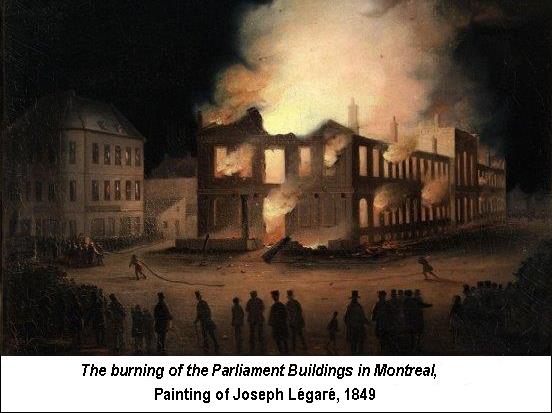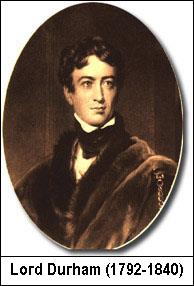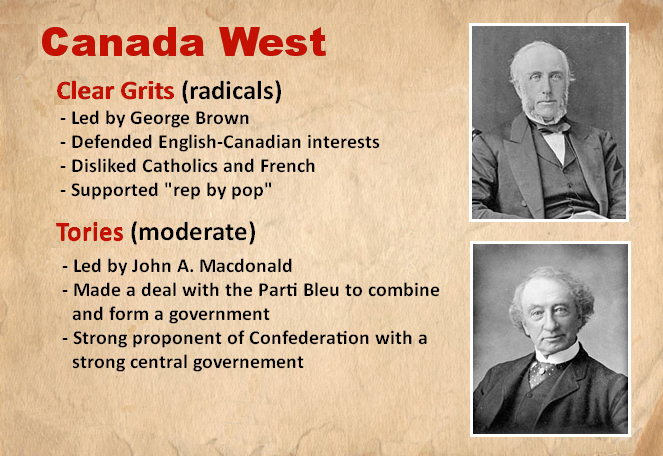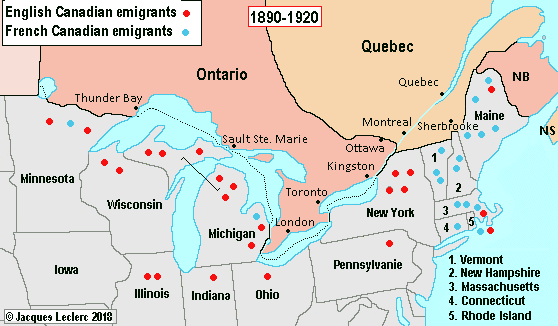The well-known Montréal Herald polemicist also declared that French Canadians were a pampered lot who had received more than their share of attention since the Conquest, whereas "English subjects" had been neglected. He believed that the policy of conciliation promoted by Governor Gosford (1835–1838) had allowed the vanquished French Canadians to dictate colonial policy to the victorious British. Loyalists denounced this policy, fearing that London would look favourably on the French Canadians and end up giving in to their grievances by granting them more powers.
Loyalist organizations banded together in an umbrella committee—the Montréal Constitutional Association (MCA)—in January 1835. A similar organization—the Québec Constitutional Association (QCA)—had been founded in Québec City in December 1834. These bodies were set up to defend the Constitution of 1791 and preserve the Legislative Assembly in its existing form. But the loyalists were not content to form constitutional associations and hold public meetings, they also began setting up armed organizations. Adam Thom, the leader of the "British" of Montréal, defended these militias in the December 12, 1835, edition of his paper:
The organization, to combine moral determination and physical force, must be both military and political. We as much need an Army as a Congress. We need pikes and rifles as much as wisdom (...) Therefore let us call a provincial congress immediately and increase the British Rifle Corp. of Montréal to 800, which is its full complement, let us send deputies to win the sympathies of the neighbouring provinces.
It was increasingly clear that the English minority had no intention of letting itself be governed by French Canadians, and was even prepared to put up armed resistance. Adam Thom freely called for the ransacking of Francophone villages.
Past history proves that nothing short of their disappearance from the land and the reduction of their homes to dust will prevent new rebellions south of the St. Lawrence, or new invasions by the Americans.
After the British Rifle Corp was disbanded in January 1836, another paramilitary organization—the Doric Club—was founded by a group of young armed loyalists. In their manifesto of March 16, 1836, club members declared that they would rather give their lives than submit to a French Canadian republic.
If we are deserted by the British government and the British people, rather than submit to the degradation of being subject of a French-Canadian republic, we are determined by our own right arms to work out our deliverance..., we are ready... to pledge to each other our lives, our fortunes and our sacred honor.
In the English-language papers, certain journalists publicly shared their views with the Queen's representative, Lord Durham, as evidenced by this June 1838 excerpt from the Missiskoui Standard, published in Frelighsburg in the Eastern Townships:
It is foolishness for the French Canadians to fight their destiny. It is impossible that a handful of Frenchmen in the extreme north-east can rise to the state of a nation, against the entrepreneurial genius of a race that has already covered most of this continent. It's more than foolishness. Since 1791 and until last year, the French sought to defy their fate; and despite having all manner of legislative facilities, they did not succeed. They oppressed the Anglo-Saxon race residing in this province, and sought to keep away those who wanted to come. And what was the result of all this? They failed. The legal power they possessed was not proportionate to their end; and when in desperation they had recourse to force to accomplish their favourite desire, the Anglo-Saxon race, like a boa constrictor, wrapped itself around them, pressed them on all sides, and crushed them.
The October 18, 1838, edition of the Montréal Gazette also featured an interpretation of the source of problems with the French Canadian community:
What is, we ask, the real cause of the state of division in which this province finds itself, and of the maladministration and anarchy to which it has long been submitted? What is it, other than that the majority of its inhabitants are of foreign origin, custom, law, language, and institutions to that of the nation at large, and that no attempt has yet been made to assimilate them into the ways of the Mother Country.
For various reasons, Lord Durham had little contact with French Canadians during his six-month stay in Canada. Instead, he surrounded himself with Anglophone advisers who viewed the French Canadians as a backward and illiterate people constantly manipulated by irresponsible leaders. In contrast, these same advisers were convinced that the English-speaking minority was well governed and had the province's best interests at heart. It was not without irony that French immigrant and journalist Napoléon Aubin (1812 – 1880), founder of the newspaper Le Fantasque, warned Lord Durham against using words such as British in 1838:
It would seem, Milord you have taken it upon yourself to make French Canadians understand that their hour has come, hope has run out, and they now must endure slavery and contempt to atone for the grave sin of not being English. All the trappings man covets are denied them: titles, honours, and consideration are taken from them and offered to those who insult them at will […] You plan to defend British interests! Ay, My Lord, do change this word, for it is a vile one. Say you shall defend colonial interests, provincial interests or whatever you may choose, but not British interests; for you see, you will not be understood here. All that is abuse and cruelty, all that is tyranny, ignorance, oppression, and intolerance, has been shrouded by your compatriots in the word British.
In these conditions, it is no surprise that Lord Durham developed such a poor opinion of the French Canadians. Here are several excerpts from his report on the topic:
They (the Canadiens) are an old and stationary society, in a new and progressive world. In all things and places they have remained French, but Frenchmen who in no way resemble those of France. Rather, they resemble the French of the Ancien Régime. [...]
The French Canadians, on the other hand, are but the remains of an ancient colonization, and are and ever must be isolated in the midst of an Anglo-Saxon world. [...]
There can hardly be conceived a nationality more destitute of all that can invigorate and elevate a people, than that which is exhibited by the descendants of the French in Lower Canada, owing to their retaining their peculiar language and manners. They are a people with no history, and no literature. The literature of England is written in a language which is not theirs; and the only literature which their language renders familiar to them, is that of a nation from which they have been separated by eighty years of a foreign rule, and still more by those changes which the Revolution and its consequences have wrought in the whole political, moral and social state of France. [...]
In Durham's eyes, the English, on the other hand, were a superior race, and English the dominant language:
The language, the laws, the character of the North American Continent are English; and every race but the English (I apply this to all who speak the English language) appears there in a condition of inferiority. It is to elevate them from that inferiority that I desire to give to the Canadians our English character. I desire it for the sake of the educated classes, whom the distinction of language and manners keeps apart from the great Empire to which they belong. At the best, the fate of the educated and aspiring colonist is, at present, one of little hope, and little activity; but the French Canadian is cast still further into the shade, by a language and habits foreign to those of the Imperial Government. [...]
The English have already in their hands the majority of the larger masses of property in the country; they have the decided superiority of intelligence on their side; they have the certainty that colonization must swell their numbers to a majority; and they belong to the race which wields the Imperial Government, and predominates on the American Continent.
Anglicization of the French Canadians and their transformation into a minority went hand-in-hand, and were to be the main objective of colonial authorities. To this end, Lord Durham encouraged London to promote massive English immigration:
Without effecting the change so rapidly or so roughly as to shock the feelings and trample on the welfare of the existing generation, it must henceforth be the first and steady purpose of the British Government to establish an English population, with English laws and language, in this Province, and to trust its government to none but a decidedly English legislature. [...]
I believe that tranquility can only be restored by subjecting the province to the vigorous rule of an English majority; and that the only efficacious government would be that formed by a legislative union.
But, I repeat that the alteration of the character of the Province ought to be immediately entered on, and firmly, though cautiously, followed up; that in any plan, which may be adopted for the future management of Lower Canada, the first object ought to be that of making it an English Province; and that, with this end in view, the ascendancy should never again be placed in any hands but those of an English population. Indeed, at the present moment this is obviously necessary: in the state of mind in which I have described the French Canadian population, as not only now being, but as likely for a long while to remain, the trusting them with an entire control over this Province would be, in fact, only facilitating a rebellion. Lower Canada must be governed now, as it must be hereafter, by an English population; and thus the policy, which the necessities of the moment force on us, is in accordance with that suggested by a comprehensive view of the future and permanent improvement of the Province [...]
For Lord Durham, perpetual negligence by the British government was the explanation for the lack of freedom and civilization among French Canadians. "It has left them without instruction and without the organizations of local responsible government, which would have enabled it to assimilate their race and customs easily and expeditiously, for the greater benefit of the Empire to which they belong." Durham saw "no hope for their nationality," in part because they could never break away from the British Empire unless they decided to go it alone (in "a wretched semblance of feeble independence"), joined some sort of potential "English Confederacy," or eventually opted for "merging in the American Union."
In short, the British Empire needed to act quickly to definitively resolve the problem of "two nations warring in the bosom of a single state" and "squelch the mortal hatred that now divides the inhabitants of Lower Canada into two hostile groups: the French and the English." Obviously, many French Canadians were outraged by the report's recommendations with respect to assimilation as well as by the insinuation that they possessed neither culture nor history.
After the Act of Union, Francophones stood helplessly by in the face of anti-French determinism. Encouraged into submission by the clergy, they believed in their "grand" spiritual destiny while the Anglophone community took control of the economy and secured the capital required for industrialization and urbanization.

